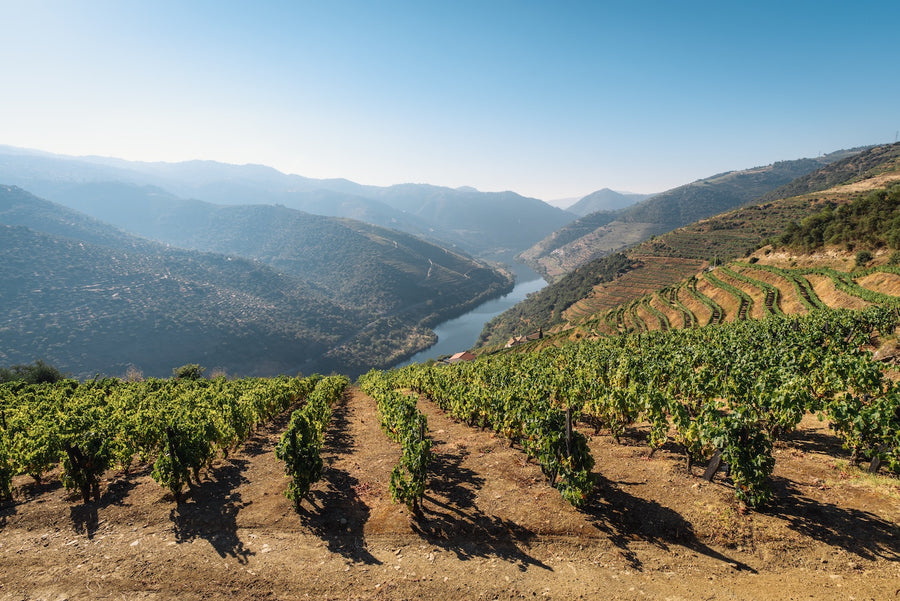
Douro-regionen i det nordlige Portugal er hjemsted for portvin. Regionen har fået sit navn fra Douro-floden, som løber fra øst mod vest – fra den spanske grænse til byen Porto, hvor floden munder ud i Atlanterhavet. Det mest karakteristiske ved Douro er det bjergrige terræn, selvom området omfatter et bredt udvalg af terroirs med forskellige eksponeringer, højder og jordtyper. Generelt ligger vinmarkerne dog på de stejle, tørre skråninger på begge sider af floden og dens mange bifloder – ofte på smalle, stenede terrasser, som tilsammen udgør et landskab, der er optaget på UNESCOs verdensarvsliste.
Selvom Douro-regionen er bedst kendt for sine forstærkede vine (portvin), er produktionen faktisk forholdsvis ligeligt fordelt mellem portvin og ikke-forstærkede bordvine. Der kan anvendes over 80 forskellige druesorter til Douro-vin, men i praksis domineres markerne af fem nøglesorter: Touriga Nacional, Touriga Franca, Tinta Barroca, Tinto Cão og Tinta Roriz (også kendt som Tempranillo). Blandt disse er Touriga Nacional den mest populære for sin aromatiske profil, mens Touriga Franca er den mest udbredte i markerne.
Vinmarkerne i Douro er ofte et eklektisk mix af portvinsdruer, og det er ikke ualmindeligt, at der findes over 20 forskellige sorter i én enkelt vinmark. I mange tilfælde kender vinmageren ikke engang den præcise fordeling af sorter i den færdige vin.
Flere internationale druesorter har også fundet vej til Douro-dalen – særligt i forbindelse med bordvinsproduktionen. Her er Cabernet Sauvignon, Sauvignon Blanc og Gewürztraminer blandt de mest plantede ikke-lokale sorter.
Read More




